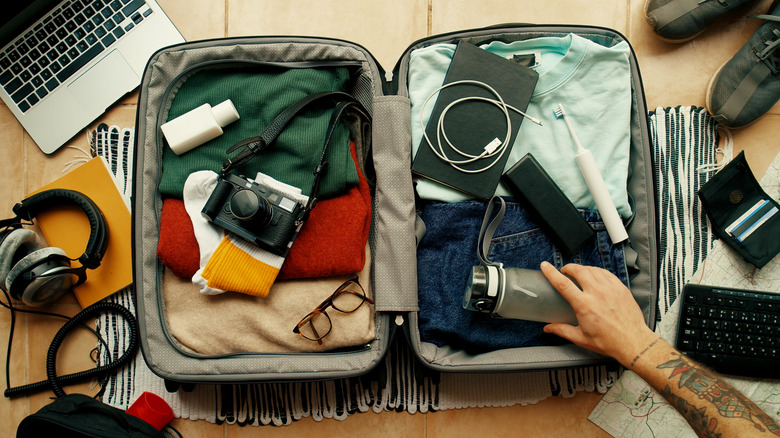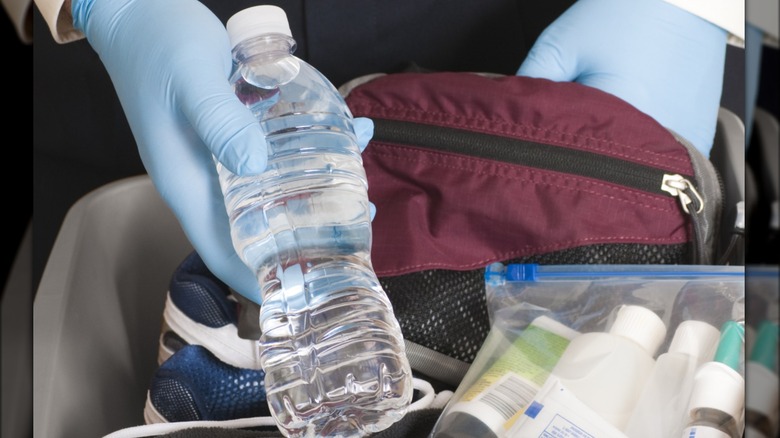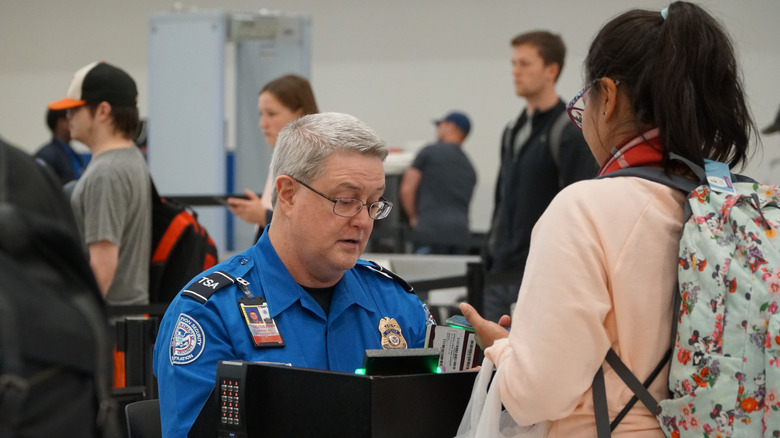Pack Your Carry-On The TSA Way To Get Through Security Efficiently
No matter how excited you might be to get where you're going, feeling stressed out while at the airport is a pretty ubiquitous experience. Getting on and off your flight always involves a series of hoops to jump through. You have to check your bags, get through security, find decent food, etc. And with every hoop, usually comes a line of travelers you have to get behind. Which — unless you've given yourself more than enough time to make it to your gate — can be anxiety-inducing.
You can never be sure how long each step will take at the airport. But one thing you can do is ensure you get through airport security faster. One of the most frustrating things that can happen is to get stopped and searched at security. It's especially frustrating because (most of the time) this delay can easily be avoided. So that you don't have to deal with this, we've gathered some tips for packing to get through security efficiently.
Steer clear of TSA's list of prohibited items
Unlike a checked bag, TSA holds a much longer list of restrictions for what you can and can't bring in your carry-on. In an interview with Travel and Leisure, Jessica Mayle, public affairs specialist for TSA's Great Lakes Region shared, "We're seeing a lot of prohibited items showing up in carry-on bags, which slows down the lines. If a carry-on bag triggers an alarm, it will require a TSA officer to open the bag to resolve it." Not only will this slow down the line for the people behind you, but it will require you to wait while the officer examines your luggage.
The TSA official website provides an extensive, detailed list specifying items that you can and can't pack in your carry-on. It includes everything you can think of, from artificial skeleton bones to oxygen tanks. If you have an item you're unsure about, their webpage likely details its status. However, two common prohibited items that people will accidentally pack in their carry-ons are liquids over 3.4 ounces and sharp objects. Before sending your things down the converter belt, you'll want to try and recall any mundane but sneaky items you might not have thought twice about: i.e., a pair of scissors or the energy drink you picked up on your way to the airport.
Organize your things for extra efficiency
If you've never flown before, you can expect the airport officers to stop you when you reach the front of the security line. They will then ask to see your boarding pass and a form of identification. To make sure this moves as quickly as possible, try to have these items in hand by the time you arrive at that point. The last thing you want to do is stash them somewhere deep in the crevices of your luggage. Securing them somewhere handy like in a fanny pack or purse is a great way to make things easier for yourself when you have to reach for these things.
You'll also want to bring any additional forms or documents that are required for your flight. To avoid any complications with wifi connection, we recommend you print these up and store them in the same accessible place as your passport and boarding pass. That way if the airport staff requests them from you, you're ready to go.
Once you're at the conveyer belt, you'll likely be asked to separate your electronics from their bags. So, you'll also want to pack these items intentionally so that they are a breeze to get in and out of your carry-on. You might need to take off your belt, shoes, and/or jacket before walking through the metal detector. Always be sure to ask the TSA officer about this to ensure you comply with their requirements.


